Stories
Stories
Bomber Command in Winter
Weather conditions provided a regular challenge for Bomber Command operations. Unexpected winds provided navigational demands. Fog on return to their home station resulted in many deaths with crews unable to safely land. While cloud cover on operations was both friend and foe. Heavy cloud made it difficult to spot targets and added danger in the bomber stream, but lack of cloud made the bombers more visible to enemy aircraft and ground anti-aircraft units.
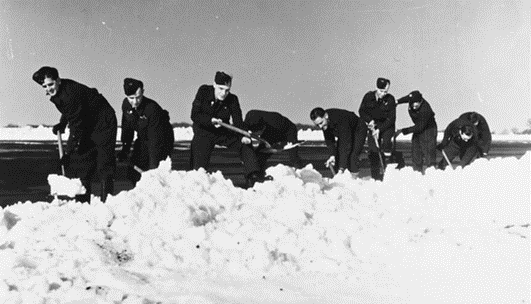
Aircrew personnel shovel away the snow from a runway.
(Credit: Imperial War Museum / RAF Official Photographer)
In winter there could be the added challenge of snow at base. This needed to be removed from runways and taxiways if the bombers were to have any chance of taking off. The whole Squadron might be called out on shovels to help clear runways to resume operations. It is reported that on one station in 1944, the weather was so bad that the R.A.F. Regiment cleared the runways continually for two days.
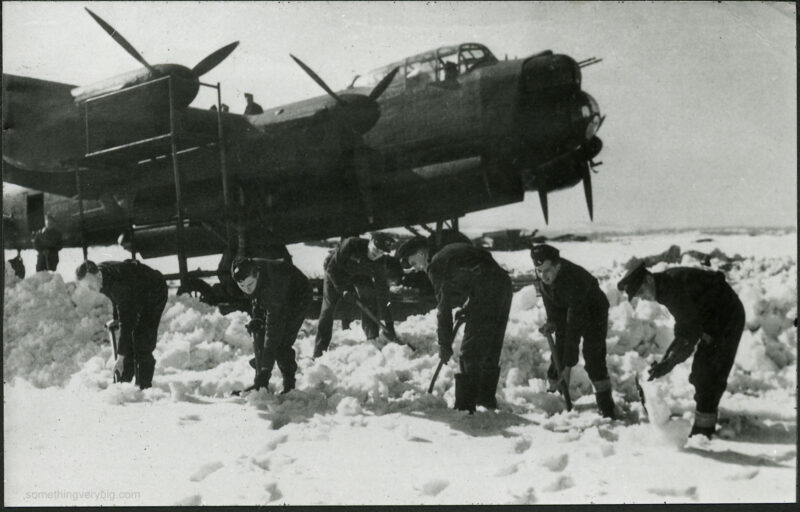
Airmen digging out the snow from around a Lancaster, Waddington, January 1944
(Credit: IBCC Digital Archive)
The cold brought added difficulty for the Erks, servicing aircraft dispersed, in the open around the airfield. And the armourers, already facing the danger of handling explosives, had to load the bombs in sometimes awful conditions.
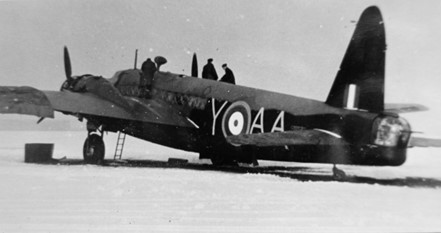
With aircraft dispersed around the airfields, regular aircraft maintenance occurred outdoors, whatever the weather.
Here the Ground Crew of 75 (NZ) Squadron are servicing Vickers Wellington R1162,
AA-Y in the snow at Feltwell – probably in January or February 1941.
Note the engine cowlings are removed and sitting on the ground.
(Credit: NZBCA. archive / Ron Mayhill).
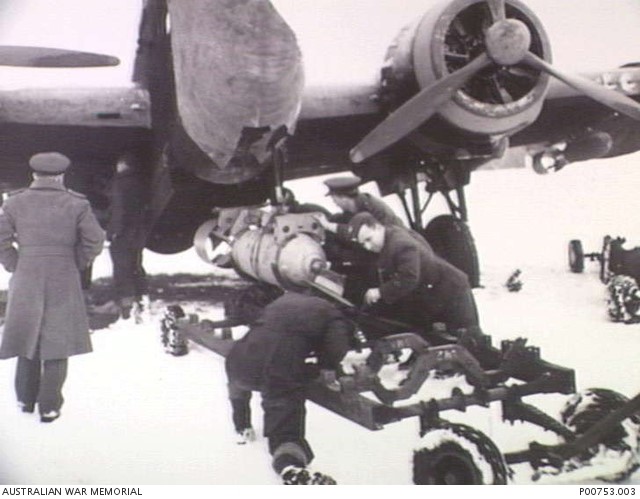
Loading a 1,000-pound bomb into a Hampden bomber in winter, 1942
(Credit: Australian War Memorial)
Everyone struggled to stay warm. The freezing conditions for crew while flying at altitude are well known. In winter, returning to base might not be a whole lot warmer.
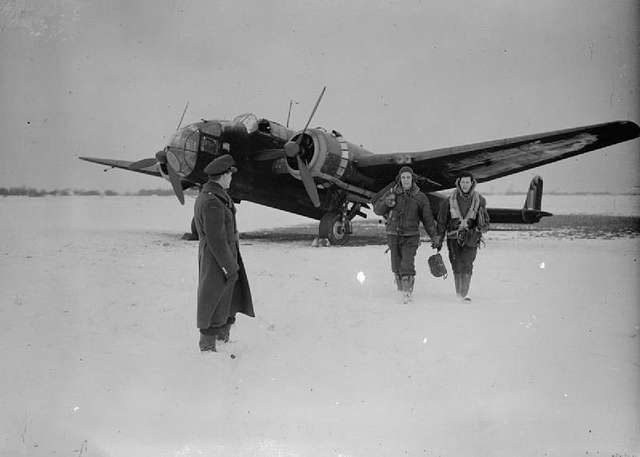
A wintry scene at Balderton in Nottinghamshire on 20 January 1942 as aircrew return from a flight in a Hampden of No 408 (Goose) Squadron, RCAF.
(Credit: IBCC Digital Archive)
Nissen huts, accommodation on many bases provided their own challenges in winter. Don Currie, an RCAF Observer/Navigator in 635 Sq. recalls winter at Wigtown: “We lived in a steel Nissen hut, never warmed by the hut’s 25 lb. ration of coal burned in a small heater. The coal supply was fenced and staffed by Italian prisoners of war, but Commonwealth chicanery ensured that at least some of the time, the 25 Lb. limit was exceeded. When the supplied number of blankets failed to keep one warm enough for comfortable sleeping, no additional amount of “purloined” ones seemed to help”
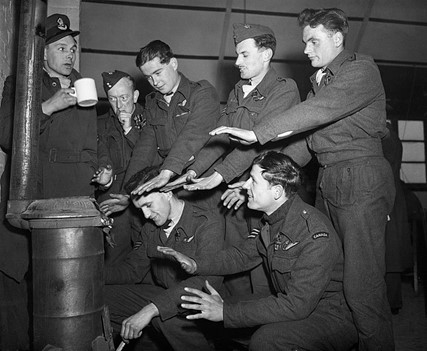
The crew of Lancaster “C for Charlie” of No 44 Squadron try to warm themselves in their Nissen hut quarters at Dunholme Lodge,
after returning from a raid on Stuttgart, 2 March 1944.
(Credit: Imperial War Museum)